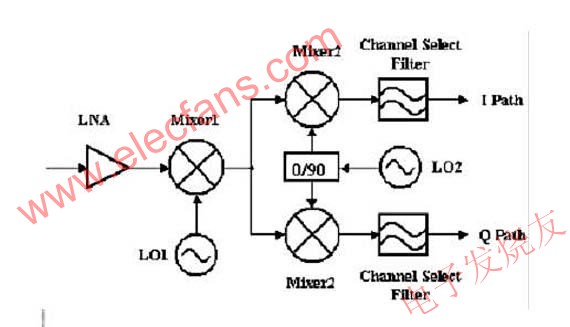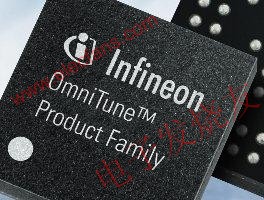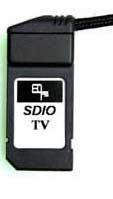Analysis of Tuners in the Digital TV Market
The development of the tuner has evolved from the original discrete device module to the later dual-conversion IF output. Although this architecture has been trending toward the IC, the disadvantage is that two external SAW filters are still needed to complete. The function of the tuner failed to fully integrate the IC. Zero IF technology can eliminate the first SAW filter, and the second SAW filter can be replaced by a channel selection filter, so the architecture is suitable for fully integrated silicon tuners. The current silicon tuners are basically all with Zero IF Dual conversion tuner or single conversion tuner with Zero IF. Silicon tuners are moving toward smaller size, lower power consumption, and higher integration requirements to accommodate mobile TV needs.
This article refers to the address: http://
  

Following the three major areas of satellite, terrestrial and cable transmission, digital TV will become the focus of the current and future major manufacturers. Currently, there are DVB-H/S, ISDB-T and T-DMB for mobile TV standards. There are many kinds of MediaFLO, ATSCM/H and CMMB, which are dazzling. However, the tuner should not be greatly affected by the standard. Currently, the spectrum of various mobile TV standards mainly involves four frequency bands: VHF III (174-240MHz), UHF (470-862MHz), L1 ( 1450-1492MHz), L2 (1660-1685MHz). Semiconductor manufacturers often design tuners that support different standards to meet different needs. Here are a few different types of colorful tuner products from different vendors.
  

Â
Considering factors such as chip size, power consumption, and cost, many tuners may only support one or two mobile TV standards. The TDA18291HN silicon tuner from NXP uses BiCMOS technology to tune the DVB-H standard in the VHF III (174Mhz to 230Mhz) and UHF (470Mhz to 862Mhz) frequency bands, with integrated LNA, quadrature mixer, and channel filtering. , PLL and VCO. The power consumption is only 150mW in DVB-T mode. The 5*5mm2 QFN 32-pin package is ideal for mobile devices such as cell phones, PDAs, PNDs, and more. Other vendors' products, such as Analog's ADMTV202, ADMTV340, ADMTV3010 for ISDB-T, CMMB and T-DMB applications respectively; Infineon's TUA9001 for DVB-H/T;
  

In fact, most tuners face multiple mobile TV standard applications to meet the different standards of mobile TV in different regions, which is more convenient for OEMs to design and produce. ADMTV102 from ADI is such a tuner that satisfies DVB-H/T, T-DMB, CMMB, DMB-TH various mobile and terrestrial TV standards. The device covers band-III, UHF, L-band, and even supports FM from 65 to 108Mhz, integrates LNA, Mixer, PLL and VCO without SAW filter, 5*5mm2 QFN 32-lead package The power consumption is only 180mW. NXP's TDA18292HN ultra-low-power multi-band silicon tuner has a record-breaking support for DVB-T, DVB-H, DVB-SH, T-DMB and ISDB-T standards as well as VHF III, UHF, L1-band, L2-band And all mobile TV bands such as S-band. The 5*5mm2 QFN 32-pin package consumes an amazing 20mW in DVB-H mode, so let's look forward to NXP's multi-band, multi-standard silicon tuner.
  

Â
Due to the high requirements of signal sensitivity, noise figure and AGC (automatic gain control), RF signals with frequencies exceeding 1Ghz also bring EMC problems, which makes the design of OEMs difficult. More tuner products are combined with the demodulator core or IC as a SiP IC or AFE module. The smaller AFE module can be directly connected to the back-end source decoder via the SDIO interface even with an SD card. (MPEG or H.264 decoder) IC connected. The HollywoodTM Solution DTV1000 and DTV1001 from TI are products designed specifically for mobile TV that combine tuner and demodulator functions. The DTV1000 operates in the UHF and L-band frequency range and is suitable for the DVB-H standard. The DTV1001 is compliant with the ISDB-T standard. Infineon's OMNIVIATM TUS9090 uses the 0.13um RF-CMOS process to support the DVB-T/H standard in the VHF, UHF and L-bands bands. At the end of 2008, Sharp developed a VA3C5CZ933 specifically for the Chinese mobile TV market and the CMMB standard in the UHF470-798Mhz band. The specific information is as follows:
  

Â
Mobile TV will appear on any handheld device that is currently popular, fundamentally subverting traditional viewing concepts. This must rely on semiconductor manufacturers' highly integrated and low-power technologies on the core chip, and the tuner will obviously not be excluded.
Heater is a combination of fans, motors and air heaters combined unit. Applicable to all types of workshops, when the air is free of dust and flammable or explosive gas, can be used as a circulating air heating. Heater can be used independently as a heating, generally used to supplement the lack of heat sink parts or the use of radiators as the duty of heating, the remaining heat load borne by the heater.
(1) horizontal blower: indoor air from the side of the inhalation, the heat exchanger after the heat, the horizontal direction. The jet has a certain range, so that the heating zone is fully blended, the temperature is evenly mixed.
(2) top blower fan: axial fan placed in the bottom of the unit, the air from the side of the heater into the air through the standing heat exchanger, and then sent down. In order to make the jet face to be discharged downward, a guide vane for diffusion is provided at the outlet of the fan.
(3) floor heaters: such units of the large amount of air, send hot air range far, can afford a larger area of heating. When running, the noise is large. Applicable to the factory building heating.
The advantage of heater heating is [2]:
(1) single machine heat supply, in the same heat load, the number of end devices used less;
(2) small heaters can be hanging, do not take up the building area, large heaters floor installation, covers an area of limited;
(3) start heating up fast.
Fan Heater
Fan Heater, Portable Electric PTC Fan Heater, Square Nice Electric Heater, Desktop Portable Electric Fan Heater
Ningbo APG Machine(appliance)Co.,Ltd , http://www.apgelectrical.com